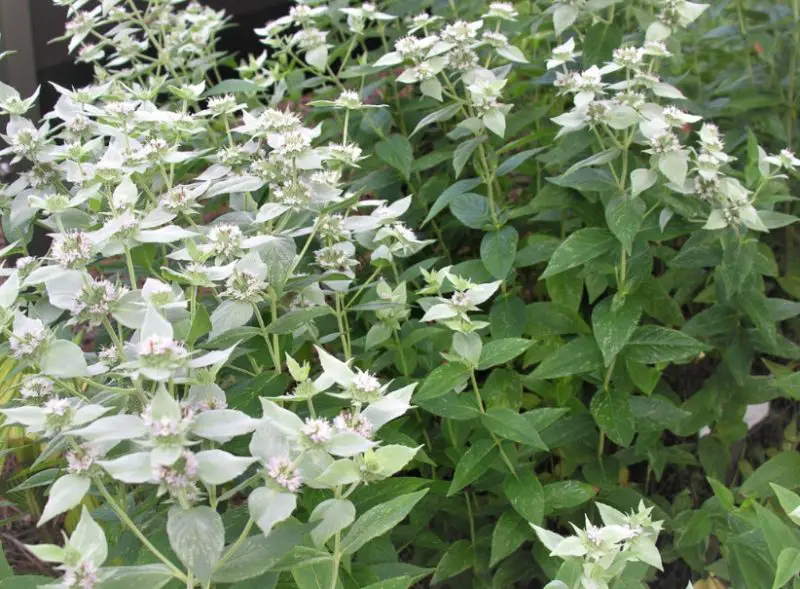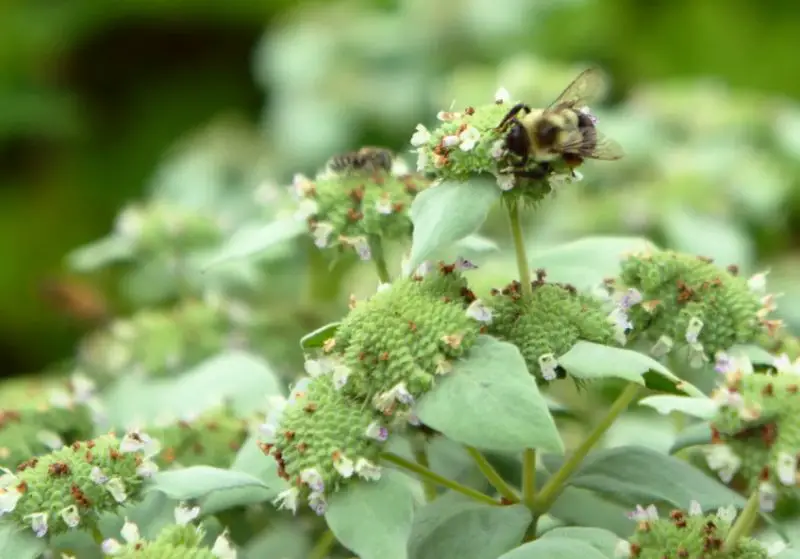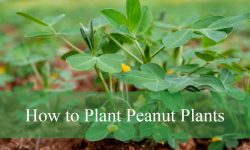The Mountain Mint Plant, with its aromatic foliage and delicate blooms, is a versatile addition to any garden. Known for attracting pollinators like bees and butterflies, this resilient herb thrives in various soil types and requires minimal maintenance. Its ability to spread and form dense clumps makes it a charming choice for borders and wildflower meadows.
About Mountain Mint Plant

Mountain mint, comprising approximately 20 species within the Pycnanthemum genus, thrives in the southeastern United States, its native habitat. As steadfast perennials, they grace the landscape with their presence from July to September, boasting clusters reaching heights of two to three feet. Their dense growth showcases dark green foliage, emitting a robust spearmint fragrance that tantalizes the senses.
Come summertime, mountain mint unveils its floral splendor, adorning gardens with an array of tubular flowers in hues of white or pink. Beyond its aesthetic appeal, mountain mint serves as a versatile herb akin to true mint. Its leaves lend themselves to culinary exploration, enriching teas, sweets, and savory dishes alike. Moreover, as a garden feature, mountain mint brings allure to native beds, meadows, and naturalized spaces, beckoning pollinators and enhancing biodiversity.
Mountain Mint Plant Care and Growing Guide

Here’s a guide to caring for and growing mountain mint:
Planting Location
When selecting a planting location for mountain mint, prioritize areas in your garden that receive ample sunlight, ideally basking in full sun to partial shade. Aim for spots that enjoy at least six hours of sunlight daily to ensure optimal growth and vigor. By providing the right amount of sunlight, you’ll encourage robust foliage and vibrant blooms, allowing mountain mint to thrive and flourish in your garden space.
Soil
Mountain mint, a resilient herb, shows remarkable adaptability to various soil conditions, making it a versatile addition to any garden. While it thrives best in well-drained soil, its tolerance for different pH levels allows it to flourish in environments ranging from slightly acidic to neutral. However, for heavy or clayey soil, a thoughtful approach is necessary. Incorporating organic matter like compost into the soil not only enhances drainage but also fosters a more conducive environment for the mountain mint to prosper.
Watering
Mountain mint, once it has taken root and established itself, stands as a testament to resilience in the face of drought. This hardy herb demands minimal attention in terms of watering, showcasing its innate ability to thrive with little intervention. However, when initially planting mountain mint, it is crucial to provide consistent moisture to aid in the development of a robust root system. Yet, caution must be exercised to avoid overwatering, as excessive moisture can predispose the plant to root rot, undermining its vitality.
Spacing
Proper spacing is key when introducing mountain mint into your garden. With its propensity to spread and form dense clusters, allowing ample room for each plant is essential for optimal growth and development. Aim to space mountain mint specimens approximately 12 to 18 inches apart during planting. This generous spacing not only accommodates the plant’s natural tendency to expand but also ensures adequate airflow and light penetration, fostering healthier growth and reducing the risk of overcrowding.
Mulching
Mulching serves as a beneficial practice for nurturing mountain mint plants, particularly during their initial stages of establishment. By applying a layer of organic mulch around the base of each plant, gardeners can effectively conserve soil moisture and inhibit the proliferation of weeds. This protective barrier not only helps retain essential moisture levels, crucial for the plant’s growth and development but also minimizes competition from invasive weeds, allowing the mountain mint to thrive unhindered.
During the establishment phase, when the plants are most vulnerable, the presence of mulch provides invaluable support, creating an optimal environment for their successful adaptation and eventual flourishing. With this simple yet effective technique, gardeners can ensure the long-term health and vitality of their mountain mint plants, fostering a lush and vibrant landscape for both aesthetic pleasure and ecological benefit.
Fertilizing
Fertilizing mountain mint is a straightforward affair, as this resilient herb typically thrives without excessive intervention. In most cases, minimal fertilization is needed to support its growth and vitality. However, if your soil quality is lacking, particularly in nutrients, a balanced, slow-release fertilizer can be applied in the spring to provide the necessary nourishment. This measured approach ensures that the mountain mint receives the essential nutrients it needs without risking over-fertilization, which could potentially disrupt its natural balance.
Pruning
Pruning mountain mint is a simple yet crucial task that rejuvenates the plant and promotes its vigor and lushness throughout the growing season. In the spring, it’s advisable to commence pruning by removing any dead or damaged foliage. This early intervention not only enhances the plant’s aesthetic appeal but also eliminates potential breeding grounds for pests and diseases, fostering a healthier environment for growth. Additionally, pruning in the spring stimulates the development of bushier growth, encouraging a fuller and more robust appearance.
Moreover, after the mountain mint has finished flowering, another round of pruning is beneficial. Trimming back the plants at this stage not only tidies up their appearance but also serves to invigorate them for a second flush of growth. By cutting back spent flower stems, gardeners can stimulate new growth and prolong the plant’s blooming period, ensuring a continuous display of vibrant blooms throughout the season.
Furthermore, regular pruning helps prevent mountain mint from becoming overly leggy, maintaining a compact and well-proportioned form.
Propagation
Propagating mountain mint is a straightforward process that offers gardeners an opportunity to expand their plant collection while rejuvenating existing specimens. The ideal times for propagation are in the spring or fall when the plant is in a state of dormancy or minimal growth. To propagate mountain mint via division, begin by carefully digging up a healthy clump of the plant from its established location. Using a sharp tool, divide the clump into smaller sections, ensuring that each division possesses some intact and healthy roots.
Next, prepare the soil in the desired planting area by loosening it and incorporating organic matter to improve its texture and fertility. Plant the divided sections of mountain mint in the prepared soil at the appropriate spacing, taking care to position them at the same depth as they were previously growing. After planting, water the divisions thoroughly to help settle the soil and promote root establishment.
With proper care and attention, the divided sections of mountain mint will gradually establish themselves, developing into vigorous new plants that contribute to the beauty and biodiversity of the garden. This method of propagation not only allows gardeners to propagate mountain mint efficiently but also ensures the continuity of this resilient herb in the garden landscape for seasons to come.
Pests and Diseases
Mountain mint stands out as a resilient and low-maintenance addition to any garden, thanks to its natural resistance to pests and diseases. While it generally thrives without much intervention, it’s important to be mindful of one common issue: powdery mildew. This fungal disease, typical among plants in the mint family, can become a concern, particularly in humid conditions.
To mitigate the risk of powdery mildew, ensuring adequate air circulation around mountain mint plants is crucial. Good airflow helps prevent the buildup of moisture on the foliage, creating an environment less favorable for the development of the fungus. Additionally, maintaining proper spacing between plants and avoiding overcrowding can further enhance air circulation and reduce the risk of disease.
While powdery mildew may pose a potential threat, with proper preventive measures in place, mountain mint can continue to thrive with minimal susceptibility to this fungal disease. By prioritizing good air circulation and maintaining overall plant health, gardeners can enjoy the benefits of this resilient herb in their gardens without undue concern about pests and diseases.
Attracting Wildlife
Planting mountain mint in your garden is not only a delightful addition for its aromatic foliage but also a boon for local wildlife, particularly pollinators such as bees and butterflies. This versatile herb serves as a magnet for these beneficial insects, drawing them in with its nectar-rich flowers and providing them with a vital food source. By incorporating mountain mint into your garden landscape, you not only enhance its aesthetic appeal but also play a crucial role in supporting the biodiversity of your local ecosystem.
As bees and butterflies visit the mountain mint to feed and pollinate, they contribute to the reproduction of other plants in the vicinity, thereby fostering a healthier and more vibrant environment. Furthermore, the presence of these pollinators helps ensure the continued productivity of fruit and vegetable crops, making mountain mint a valuable ally in sustainable gardening practices.






